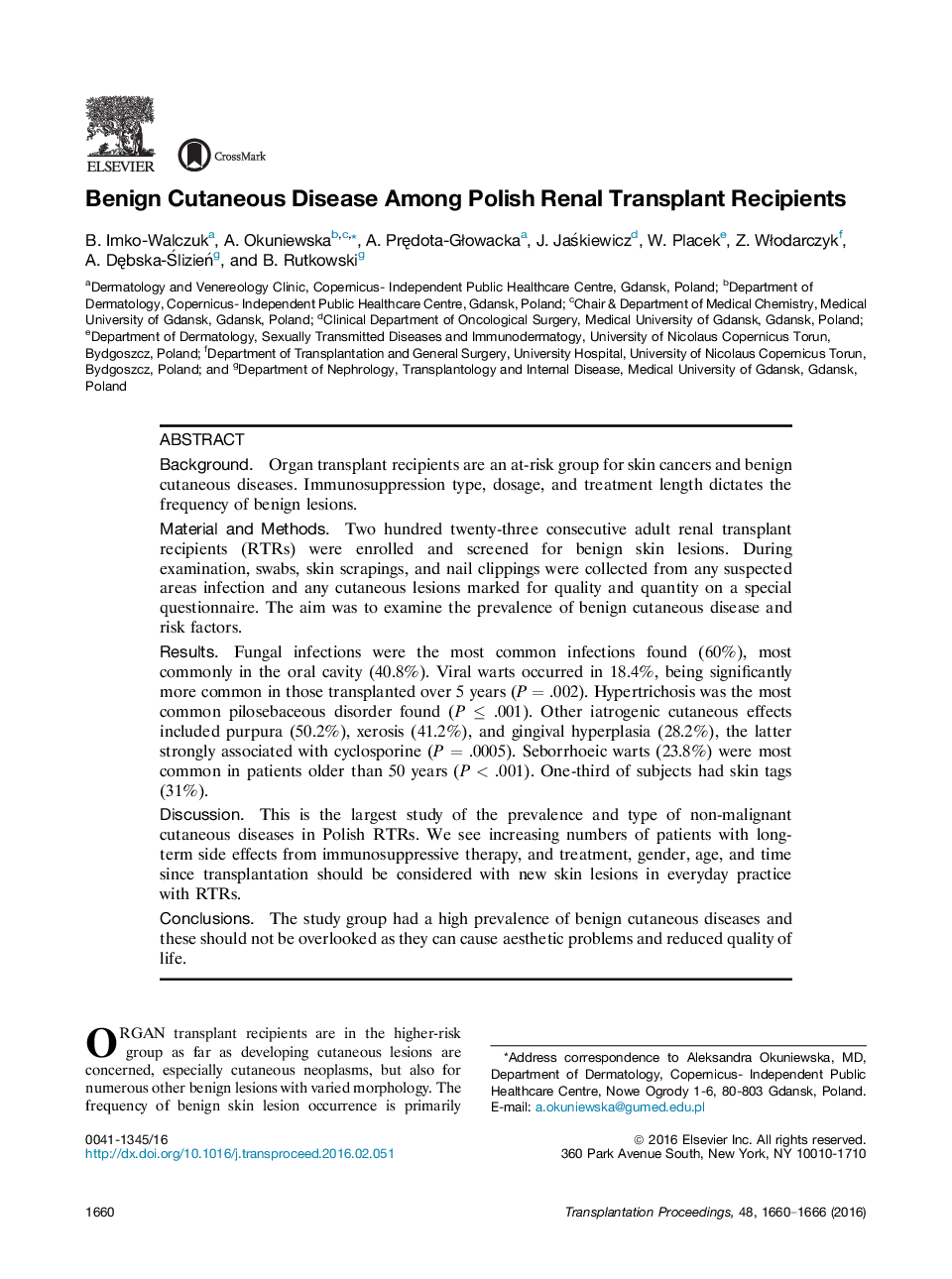| کد مقاله | کد نشریه | سال انتشار | مقاله انگلیسی | نسخه تمام متن |
|---|---|---|---|---|
| 4256093 | 1284510 | 2016 | 7 صفحه PDF | دانلود رایگان |
• Organ transplant recipients are an at-risk group for benign cutaneous diseases.
• Immunosuppression, dosage, and treatment length dictates the frequency of benign lesions.
• Fungal infections were the most common infections found in renal transplant recipients.
• Hypertrichosis was the most common pilosebaceous disorder found.
• Gingival hyperplasia was strongly associated with cyclosporine.
BackgroundOrgan transplant recipients are an at-risk group for skin cancers and benign cutaneous diseases. Immunosuppression type, dosage, and treatment length dictates the frequency of benign lesions.Material and MethodsTwo hundred twenty-three consecutive adult renal transplant recipients (RTRs) were enrolled and screened for benign skin lesions. During examination, swabs, skin scrapings, and nail clippings were collected from any suspected areas infection and any cutaneous lesions marked for quality and quantity on a special questionnaire. The aim was to examine the prevalence of benign cutaneous disease and risk factors.ResultsFungal infections were the most common infections found (60%), most commonly in the oral cavity (40.8%). Viral warts occurred in 18.4%, being significantly more common in those transplanted over 5 years (P = .002). Hypertrichosis was the most common pilosebaceous disorder found (P ≤ .001). Other iatrogenic cutaneous effects included purpura (50.2%), xerosis (41.2%), and gingival hyperplasia (28.2%), the latter strongly associated with cyclosporine (P = .0005). Seborrhoeic warts (23.8%) were most common in patients older than 50 years (P < .001). One-third of subjects had skin tags (31%).DiscussionThis is the largest study of the prevalence and type of non-malignant cutaneous diseases in Polish RTRs. We see increasing numbers of patients with long-term side effects from immunosuppressive therapy, and treatment, gender, age, and time since transplantation should be considered with new skin lesions in everyday practice with RTRs.ConclusionsThe study group had a high prevalence of benign cutaneous diseases and these should not be overlooked as they can cause aesthetic problems and reduced quality of life.
Journal: Transplantation Proceedings - Volume 48, Issue 5, June 2016, Pages 1660–1666
